
Estimated Overdose Deaths Due to the Loss of MOUD in the One Big Beautiful Bill Act
Research Memo: Delivered to House Speaker Mike Johnson and Majority Leader John Thune
News
Meeting twelve months after the first COVID-19 vaccine was approved for use by the FDA, a Leonard Davis Institute of Health Economics (LDI) virtual panel of top experts engaged in a scientific review of the good, the bad, and the ugly in the last year’s efforts to contain the pandemic.
The good is that the available vaccines have proven as safe as they are effective in protecting against serious coronavirus illness. The bad has been the massive campaigns of misinformation that have fueled such extraordinary levels of vaccine hesitancy. The ugly is that vaccine equity goals set early on have not been met, and that the heightened public sentiment about addressing racial disparities highlighted by the pandemic is now waning.
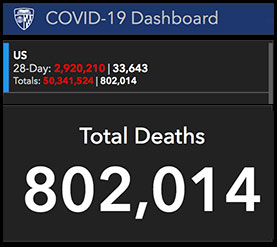
The December 10, 2021 event at University of Pennsylvania bookended an LDI virtual seminar convened a year ago to look forward to the challenges to distribution and uptake of the new vaccines. This latest seminar, focused on what actually did happen, was moderated by Penn School of Nursing’s Alison Buttenheim, PhD, MBA, a nationally recognized vaccine expert and LDI’s Director of Engagement. The four panelists were Nicole Lurie, MD, MSPH, Strategic Advisor to the CEO of the Coalition for Epidemic Preparedness Innovations (CEPI); Paul Offit, MD, Director of the Vaccine Education Center at Children’s Hospital of Philadelphia and Chair of Vaccinology at the Perelman School of Medicine; Ala Stanford, MD, Founder of the Black Doctors COVID-19 Consortium; and Florence Momplaisir, MD, MSHP, FACP, an LDI Senior Fellow and Assistant Professor of Infectious Diseases at the Perelman School.
Among the other issues discussed at the seminar were the rise and impact of new coronavirus variants, the contentious battles over vaccine mandates, the struggle to support and supply the COVID-19 Vaccines Global Access (COVAX) initiative, and the often clumsy terminology being used by the press and others to describe COVID-related events.
Making one of the session’s most poignant points was Offit, who called for public service and news announcements about vaccines to be made “more emotional.”
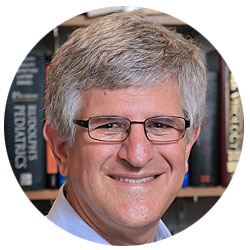
“I was on service last week and we saw a lot of patients with COVID. It was pretty grim,” said the internationally renowned virologist and pediatrician. “What all those patients had in common, including those over five, was that none of them had been vaccinated. Parents weren’t vaccinated. Siblings weren’t vaccinated. We are not going to leave this pandemic until we get people vaccinated.”
“When you watch television reports that there are now 200,000 cases of childhood infection, or that there’s been a 30% increase, it’s like the old Stalin line: One death is a tragedy and a million deaths is a statistic,” Offit continued. “We are numbing people with the numbers. We have to make messaging about vaccination personal and real and intimate. What I’m arguing for is a far more emotional appeal. I wish I could film what I experienced last week in the hospital so people could see children wheeled up to the ICU with parents crying as we sedate the child, put a tube down into their trachea, and connect them to a ventilator. Look at these images and then still choose not to get your child vaccinated.”
Panelist Lurie, Director of the Coalition for Epidemic Preparedness Innovations, emphasized the “huge” effect anti-vaccination propaganda is having on both the spread of the disease and efforts to get more people vaccinated.
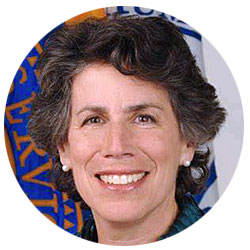
“Vaccine misinformation and disinformation are global problems,” Lurie said. “We talked about it a little bit last year when Russian media generated stories about the AstraZeneca vaccine turning you into a chimpanzee. The messaging is subtler now and it’s everywhere, in every country. We are already seeing an amazing disinformation campaign focused on Omicron.”
“There’s no silver bullet to stop this,” Lurie continued. “We need a multilayered strategy at every level to combat it. To start with, governments can do more to block and shut down the websites of foreign actors targeting our populations with misinformation — particularly our Black and Hispanic populations. And we have not seen sufficient action in that regard. We need to do a much better job calling this out publicly in ways that make it incredibly uncomfortable for these actors to persist.”
In more positive local news, the City of Philadelphia has made headlines for achieving one of the highest rates of vaccination among African Americans of any major city. The person responsible for much of that is Ala Stanford, founder of the Black Doctors COVID-19 Consortium.
At the beginning of the pandemic in March of 2020, the Black Doctors group began organizing hyper-local COVID testing efforts in Black neighborhoods, affiliating with local churches, schools, barbershops, salons, sports teams, and a variety of social circles to educate residents about the need to be tested and provide those tests as well.
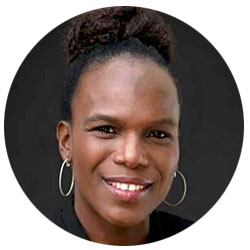
“A year later, in January 2021 when the vaccine came out, we had 25,000 people, their families, their churches, and their social networks who were spokespersons for us in a community that moves on word of mouth,” said Stanford. “People were hearing from their pastors, their grandmothers, and many others in their circle of trusted contacts about why testing and vaccinations were safe and important.”
Many of Stanford’s community engagements were as creative as they were effective.
“When you belong to a church and see all the COVID funerals,” Stanford explained, “you often hear the pastor saying, ‘The husband was vaccinated. The wife was not. We’re burying her today.’ So, I got brazen and now make sure the ushers know we’re open nearby for testing and vaccinations — and we get people coming in right after the funeral. My kids do basketball, swimming, gymnastics, and track and field, so I set up team days for teams to come in for testing and vaccination and let the parents know they could get a first shot or a booster too if they came along. I did my mom’s church group and every other circle I could touch.”
Her group also stepped in to provide educational support and convenient vaccination services when both the School District of Philadelphia and SEPTA imposed a vaccine mandate deadline for their employees.
Despite the success of her work, Stanford said she is concerned about a rising false sense that the pandemic is almost over as people go back to crowded social, sports, and entertainment events, and COVID safety initiatives in neighborhoods are pulled back.
“A lot of those locations that were available for testing and vaccinations, they’re gone now,” Stanford said. “Everybody thinks we’ve met our mark. But I can tell you that this Wednesday we saw one 187 people. Seventy of them were for COVID testing and 15 percent of them were positive. So, there’s still a huge need out there.”
A related worry for Stanford is the just-released RAND Corporation U.S. survey that found “public recognition of racial inequities and the impact of systemic racism — despite mounting evidence — is fading.” One finding was that 61.1 percent of survey respondents in 2020 agreed that people of color face more of the health impact of COVID-19 than white people and 57.5 percent agreed that people of color also faced more of the financial impact of the pandemic. A year later, those numbers have dropped to 52.7 percent and 50.3 percent respectively.

Infectious disease expert Florence Momplaisir, who was born and raised in Haiti and has a keen sense of concern for domestic and international issues related to vaccine disparities, noted that “we started at a very, very low bar, but I think we have done better at being intentional in addressing vaccine disparities,” she said. “The disparities are rooted in practices of structural racism and it will take a lot more time and persistence to move the needle toward equity, but we need to keep working at it.”
“Domestically,” Momplaisir continued, “we need to increase — not decrease — free access to testing and vaccines in trusted and convenient places like schools, churches, and community centers as well as in pharmacies, barbershops, and salons that’s been done so well in Philadelphia. While vaccination is a key pillar to COVID-19 prevention, testing continues to have high value, but in the current landscape I see testing becoming either unavailable or too costly, so we need to do better.”
Momplaisir noted that, although she was originally not in favor of vaccine mandates, the effectiveness of those implemented in Philadelphia changed her mind. “Mandates definitely increased uptake and reduced risk, but mandate programs do require accompanying education for workers in one-to-one sessions, town halls, email, et cetera, particularly for workers in under-resourced communities.”
Another theme of the session was the widespread mismatch of public perceptions to scientific reality. One that has frustrated virology scientist Offit was the well-meaning but inaccurate characterizations in the press of “breakthrough” infections in vaccinated people. Offit emphasized that public understanding is skewed in the belief that the COVID vaccines primarily confer protection against infection, when they actually confer protection against infections that progress to serious illness and hospitalization.
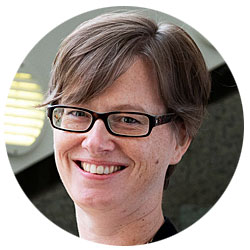
“A communications mistake was made on July 4 of this year with the outbreak that occurred in Provincetown, Massachusetts,” Offit explained. “Three hundred and forty-six fully vaccinated men developed COVID and they were unfortunately labeled ‘breakthroughs.’ Four out of the 346 were hospitalized — for a hospitalization rate of 1.2%. That’s good. That’s a vaccine that’s working very well. But the term ‘breakthrough’ implies failure and holds this vaccine to a standard that we hold for no other mucosal vaccine. If you only get an asymptomatic or mildly symptomatic infection after being vaccinated, that’s what you want. Using the term ‘breakthrough’ has created an expectation for this vaccine that is very, very hard to meet.”
One consensus of the session was that this will not be the last pandemic the country or the world faces and it is imperative for governments to learn from current mistakes and take a more organized approach to maintaining a state of international preparedness for such catastrophic public health emergencies.
“You can’t be passing the tin cup in the middle of a pandemic,” said Lurie alluding to the frantic rush in which the COVAX organization was assembled on the fly to acquire and distribute live-saving vaccines around the world.
“We certainly haven’t met our equity goals globally,” Lurie continued. “These governments and global organizations need to come together, stand up and acknowledge that aside from making and selling vaccines, we all have a global public health and moral obligation to help in this pandemic and establish what is needed to be better prepared for the next one.”
A final, forward-looking point of the session was that the misinformation and disinformation machinery that has coalesced into a global geopolitical tool during the COVID-19 era, may pose a future threat to other areas of U.S. health care.
“I study vaccine acceptance for the childhood schedule,” said Buttenheim whose research includes NIH-funded studies of vaccine hesitancy and vaccine refusal. “I’m worried about the spillover of vaccine hesitancy to the childhood schedule and also at the policy level, with potential attempts to roll back the school-entry mandates that undergird our national herd immunity against various other diseases.”


Research Memo: Delivered to House Speaker Mike Johnson and Majority Leader John Thune

Research Memo: Delivered to House Speaker Mike Johnson and Majority Leader John Thune

Hospitals’ Current Cost Reports are Unreliable and Should be Improved, LDI Fellow Finds

If Federal Support Falls, States May Slash Home- and Community-Based Services — Pushing Vulnerable Americans Into Nursing Homes They Don’t Want or Need

Historic Coverage Loss Could Cause Over 51,000 People to Lose Their Lives Each Year, New Analysis Finds

Cited for “Breaking New Ground” in the Field of Hospital Operations